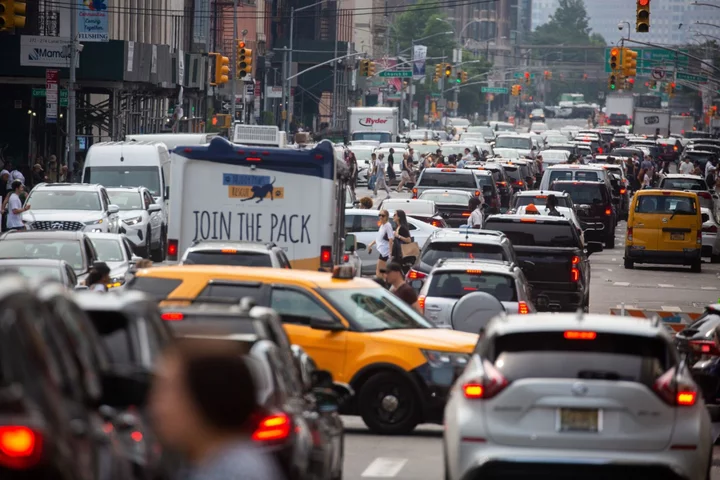Nearly everyone in the New York City region wants a break on a new congestion pricing toll set to take effect in Manhattan next year, but the cost of those exemptions adds up.
A six-member Traffic Mobility Review Board held its second public meeting on Thursday as it works to create a tolling schedule for the new program, which could begin as soon as the second quarter of 2024.
The board is tasked with figuring out not only what groups — like low-income residents or New Jersey commuters — should receive carve outs.
But it also needs to assess how to dole out those discounts while still bringing in the $1 billion a year that the Metropolitan Transportation Authority, which runs the city’s subways, buses and commuter rail lines, is banking on.
“We’ve said from the very beginning, we want to keep the base toll as low as we possibly can,” Carl Weisbrod, chair of the Traffic Mobility Review Board and a former director of New York City’s Department of City Planning, told reporters after the panel met on Thursday. “And that means that the fewer special cases, the fewer exemptions, the fewer possibilities that are going to raise the toll for everybody. So our goal is to be as fair as possible.”
The program is the first of its kind in the US and will charge drivers driving south of 60th Street in Manhattan in an effort to reduce traffic and improve air quality. E-ZPass drivers may pay as much as $23 during peak hours and $17 during off-peak periods.
It’s an unenviable job for the board, which has to weigh the interests of commuters and residents against the capital needs of the MTA. For example, if the panel gives drivers like New Jersey commuters a credit for tolls they already paid on tunnels to get into Manhattan, it would raise the pricing fee that other motorists will have to pay. However, denying them a discount may push those drivers to seek out free crossings, increasing traffic in other areas.
Then, there’s the debate over how to charge taxis and for-hire vehicles such as Uber and Lyft. The board is also weighing how to charge the 16,000 low-income drivers who commute into the central business district, according to the MTA. Of that group, about 1,560 live more than half a mile from a transit option, making it difficult to forgo their cars for public transportation.
The board must weigh the cost of the new toll on various groups and how much they can alleviate that burden while still generating enough funds to help modernize the largest transit system in the US, all while managing to avoid the creation of new, disruptive traffic patterns.
“This is like a Rubik’s cube,” Weisbrod said during the meeting. “We can’t decide on one element of this until we decide on all elements of this because it all has to fit together.”
Some board members expressed concern for lower-income drivers, people who live far from a subway station or an express bus, or workers who may have to spend two hours on public transit to avoid the new toll.
“You’re putting in a day’s work just to get to work,” said John Durso, president of the Long Island Federation of Labor.

